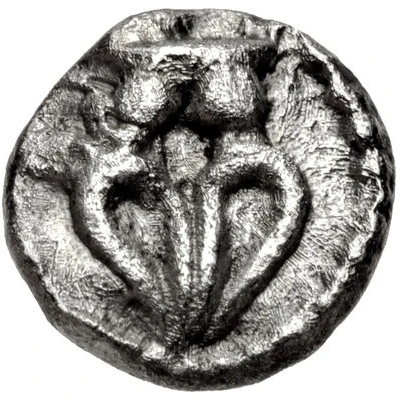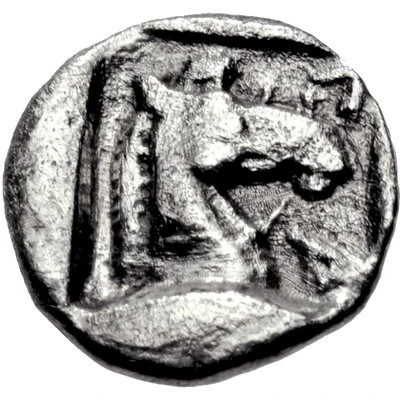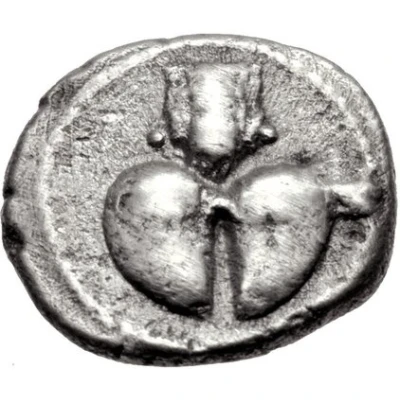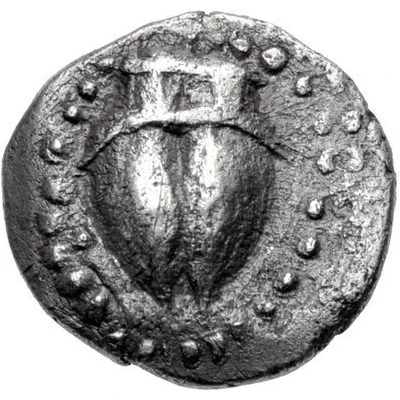
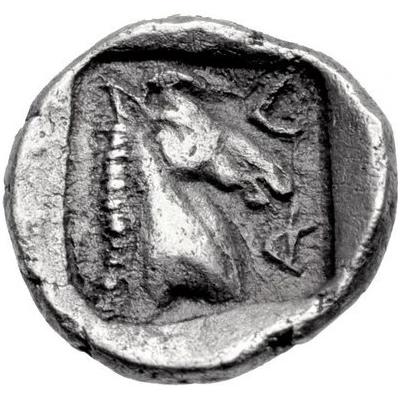

© Classical Numismatic Group, Inc.
Hemiobol 460 BC - 440 BC
| Silver | 0.4 g | 8 mm |
| Issuer | Larissa (Thessaly) |
|---|---|
| Type | Standard circulation coin |
| Years | 460 BC - 440 BC |
| Value | Hemiobol (1⁄12) |
| Currency | Drachm |
| Composition | Silver |
| Weight | 0.4 g |
| Diameter | 8 mm |
| Shape | Round (irregular) |
| Technique | Hammered, Incuse |
| Demonetized | Yes |
| Updated | 2024-10-10 |
| Numista | N#285461 |
|---|---|
| Rarity index | 100% |
Reverse
Head of bridled horse to right; all within incuse square.
Script: Greek
Lettering: Α Λ
Interesting fact
The Hemiobol coin was used as a form of currency in ancient Greece, specifically in the city-state of Larissa (Thessaly) during the 5th century BC. The coin's design features the head of a youthful male on one side and a horse on the other, symbolizing the importance of horse breeding and trading in the region. Despite its small size, the Hemiobol coin played a significant role in the ancient Greek economy and was widely used for everyday transactions.
